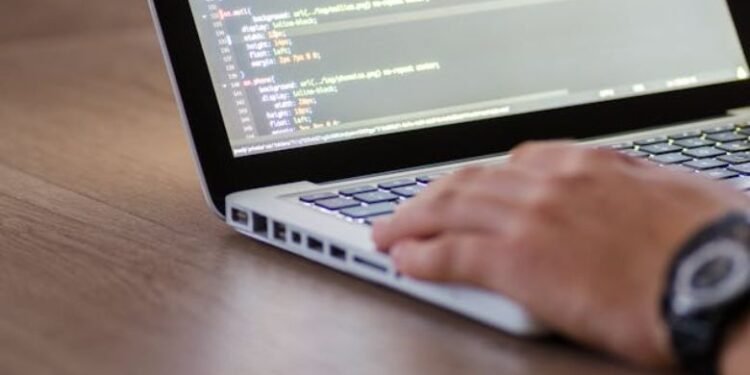Error Cause 10 Error Code 2030 this means why this happens, and this complete technical guide turns out to be firm.
If you are ever in the midst of an important task, whether you want to update a system, launch the program, or try to connect to the server, to be hit with just a message, who read “Error 10 Error Code 2030”, you probably felt the feeling of the acquaintance…a situation many tech enthusiasts encounter when exploring new devices or troubleshooting in the world of Gadgets & Reviews.
I remember that I was with me for the first time. I drove a database client in a perfectly normal morning, just updated the configuration when the screen suddenly turned red and came out:
“Operation failed. The error case 10. Error code 2030.”
No other clarification. No auxiliary button. Just a vague error number that can also be a puzzle from a computer that decided it was enough.
This experience closes a week -long rabbit hole of research, combing through technical forums, developer threads, producer documentation and system logs, in order to understand what 10 and code 2030 are causing.
Regardless of this article I learned, a deep technical collapse, clarification and real solutions, which is written in such a way that the two can be understood and practically useful.
Understand Basic: “Error causes 10 error code 2030” What is?
Before you dive into the solution, it is important to know what we are doing.
The “error causes” and the “error code” format usually comes from the systems where many subsistols communicate, such as databases, firmware modules, software clients or network applications.
In this context:
- Errors usually cause 10 indicates communication or verification failure between a customer and a host system.
- Error code 2030 is often associated with a resource access problem, such as timeout, permission conflict or data synchronization problem.
So when these two appear together, 10 / code causes 2030, they usually mean:
“Your customer tried to request, validate or synchronize with a host system, but something went wrong during the process, either configuration match, contaminated cash or invalid authentication.”
Think of it as a conversation between two computers, where some say, “Hi, I need this file,” and the other answer, “I don’t recognize you, or the file looks corrupt.”
Why Error Cause 10 Error Code 2030 happens?
Here’s the truth: It’s not a single reason. This error coding combination is reference dependent, which means it can be displayed in the database, built -in system, software costume or even corporate level applications.
In all environments, however, there are five consistent technical causes created by this condition.
Let’s look deeply at everyone.
1. Data Validation or Sync Mismatch
In many systems, data integrity is constantly being investigated, especially involving cloud sync or configuration verification.
The reason 10 is often triggered when the system detects a discrepancy in the expected data structure or check -kum verification.
For example:
- If someone does not match the local configuration file, what expects the server,
- Or if the check is not adjusted for a resource (eg setting file or cash item),
Client considers something wrong and makes a mistake at 2030 as a failed sure.
This is a protective mechanism, mainly that says:
“I refuse to continue, because your local data looks different from what I trust.”
In my case, it was definitely a problem. A single missing line in a configuration file (one that was left to a failed update) got the confirmation process to collapse.
2. Network or connecting team blocking
Another frequent cause is unstable network communication during the data exchange for client cough.
If a package falls, or if the handshake is interrupted between the system, the host cannot confirm the data receipt, leading to a cascade of internal errors, which is finally the reason to be logged in as 10 / code 2030.
You will often see this pattern:
- API or database client (MySQL, Mongodb, etc.)
- Enterprise Software Remote Server
- IoT -device uploaded telemetry to Sky
Here, the cause of 10 communication failures in the trigger represents, while the code specifies the code 2030 that the operation failed due to an incomplete transaction.
A good analogy: Imagine sending an important email, but your Wi-Fi leaves the moment you “send”. The client tries to try again, becomes confused and reports an error.
3. Contaminated cash or temporary files
Modern applications are very dependent on paying. They store data on quick causes to improve performance, but when these cash are contaminated, especially after updates or crashes, this system may separate the situation.
When the integrity of the system moves into the check, it detects incompatibility, and sets fire with an error:
“Error causes 10: an invalid cache data. Error code 2030: verification failed.”
One of the most unsettled corrections I discovered is to clean local caches or temporary directors.
After removing the cache and restarting the application, the system often rebuilds a clean condition, which solves the problem immediately.
This is a digital counterpart to say, “Okay, let’s start and reconstruct what we know.”
4. Authentication or credentials that are not matching
In a safe or network environment, certification tokens and sessions are continuously validated.
If the system reveals:
- A finished token,
- A credentials that does not match, or
- An effort to play replay (eg from an old login),
The confirmation layer can reject handshakes and produce 10 / code 2030.
I replaced it once by replacing a configuration key manually in a local API client without updating tokens. The server immediately rejected my requests, an acquainted “error code 2030: rejected verification.”
Lesson here: Check your credentials, especially if you have recently switched server, account or token.
5. Software update or version that does not match
Sometimes the problem of your system does not occur at all, it is not matching the version between the client and the server.
When a side of communication uses an old Schima or API version, it cannot properly explain the other’s request structures.
This resulted in “semantic misconception”: The customer says one thing, but the host explains the other.
When this happens, the cause 10 often marks links at the protocol level, and code 2030 logs to actual transaction failure.
This is why you can see this error appear after updating rolls or firmware updates.
OK? Make sure both sides of the system use Sangat Build or Schima.
Symptoms that help you identify errors
Based on the system log and user reports, here are the first warning indications that you are moving towards an error for a reason 10 / code 2030:
- Slowly or hang request before the accident.
- The authentication gives the loop or repeated “login”.
- Rebuilding or increased with unexpected cash.
- Log showing “Resource Match” or “Computerification Failed”.
- Failed data wash immediately after updating or timeout for the network.
If you notice any of these symptoms, it is time to check things before the spiral in a fully developed error position.
Step by Step Fix Error Cause 10 Error Code 2030
Now that we understand the causes, let’s see how we really solve the problem.
Below are both basic and advanced stages that you can use on the basis of the layout.
Step 1: Restart and confirm again
Yes, it seems to be Clinch, but a pure restart repeats temporary connections and can clean the corrupt state data.
After restarting, you must confirm the configuration or environmental variables.
Step 2: Remove cash and temporary data
Find the cash folder of your app or client.
Remove it or change the name (so you can recover later when needed).
Return the program, it forces a complete renovation.
Sample Trail:
C: \ Users <User> \ AppData \ Local <Appname> \ Cache
Step 3: Revalidate Identification or Symbols
If the system requires authentication, you can regenerate your own API key or login token.
Remove any stored credentials or cookies and log on again.
Step 4: Check the network stability
Ping using host system or test connection:
Ping <erver_address> or Tracert <erver_address>
If you look at the package loss or high delay, fix the network before trying again.
Step 5: Check version compatibility
Check that your customer and host run compatible versions.
For database or API, confirm the adjustment of Skima.
In software, make sure both sides have the last patches.
Step 6: Review logo for specific undercodes
Many systems log up several reference lines, such as “SAB Code 2031” or “Exception 0x010a.”
These can help in the torment if the problem is with I/O, verification or authentication.
Step 7: Restore or repair the application
As a final solution, uninstall and restore the customer.
If there is a business environment, you can use a repair tool or check verification to restore missing files.
Advanced Troubleshooting (for IT subjects and developers)
If you are in a technical or administrator role, you can dig deep into the system log and the pile of verification.
- Check the hash stability between clients and host configurations.
- Use devices like Wireshark to inspect the handshakes.
- Compare the built time stamp between your local example and host environment.
- If applicable, reset the configuration form through CLI or developer console.
Sometimes a simple metadata that does not match between two JSON or XML descriptions takes all this to throw away the 2030 code.
Prevent future events
When you decide on the problem, prevention becomes your best friend.
Here are important practices to avoid repeating the cycle:
- Keep the software up to date. There is #1 cause of old customer value errors.
- Do not update the center process. A half-lagu-patch often destroys local data.
- Avoid manual editing to configure files until you know the exact scheme.
- Maintain a stable network connection during washing or verification operations.
- Clean the old cache and session data regularly, especially after the version upgrade.
Example of real world: my case study
When I finally discovered my Error Cause 10 Error Code 2030, the culprit was misleading, a single corrupt cash entrance that was a discrepancy between my local state and the server.
After cleaning and repeating the cash, the system coordinated innocently. But that journey taught me something deep:
In complex systems, small anomalies appear beyond. Computers are incredibly literal, they require each bite and city to match expectations.
And then a vague numerical error message seems like the often wonderful human explanation: a misunderstanding.
FAQs
Question: Error code 2030 Is always due to my system?
Not always. Sometimes this version is a server side verification failure during roll -out.
Question: Does restoration always make it?
Only if the problem is local (e.g. contaminated cash). If there is a network or authentication error, it will not help.
Question: Why does this happen after the update?
Because the update changes configuration structures, invalidating old cache or credentials.
Question: Is there a universal tool to detect it?
Not at all, but log analyzers, integrity checkers and Wireshark can help identify collapse in communication.
Key Takings
- The truth about Error Cause 10 Error Code 2030 is that it is less than an “error” and a communication distribution between client and server, data and verification, or even the user and the system.
- Good news? Once you understand the root mechanics, the data adjustment, the cache corruption or identification conflict, it becomes estimated and loosely.
- I still remember the quiet moment after loading my cash and the system completely. No mistake. No glowing red message.
- Just the quiet, quiet satisfaction of solving something that once looked mysterious.
- And this guide aims to convert technical confusion to technical clarity.
- Because once you understand that the language of your system speaks, an error message as “Error Cause 10 Error Code 2030” also begins to create the correct meaning.
Additional Resources:
- Error Cause 10 Error Code 2030: Full Fix & Technical Guide: Discover why Error Cause 10 Error Code 2030 occurs in Call of Duty games and how to fix it with proven technical solutions.
- How To Fix Error Cause 10 Error Code 2030 in BO6 Ranked (YouTube): Step-by-step video guide showing practical methods to resolve Error 10, Code 2030, including loadout fixes and network tips.
- Activision Support – Server Status & Troubleshooting: Official support portal to check server status, game updates, and troubleshooting steps for common errors like Error Code 2030.
















